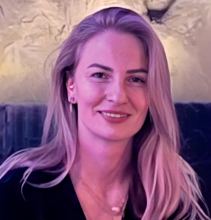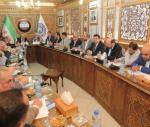You are here
A unified future: How science and technology can promote diplomacy
Sep 29,2024 - Last updated at Sep 29,2024
In the last decade, major industries, like defence consortia, banks and large agribusinesses, have begun exploring the vast potential of quantum computing, driven by its potential to improving everything from coding and logistics to revolutionising supply chains. Such big players are often seeking profit generation, but quantum computing offers immense applications that can find solutions to societal challenges in areas like food security, public health and climate change mitigation among others.
Quantum computing is a profound technological advancement that can reshape and improve the world’s approach to solving complex global and local challenges. By using this technology to tackle health crises, climate change, food security and more, significant progress can be made towards achieving the United Nations Sustainable Development Goals (SDGs) goals aimed at ending poverty, protecting the planet and ensuring prosperity for all.
However, realising this potential will require a concerted effort from governments, the private sector and the scientific community, as such alliance can only be realised through global collaboration and science diplomacy to make technology available for all.
Organisations like GESDA (Geneva Science and Diplomacy Anticipator), in collaboration with the European Organisation for Nuclear Research (CERN), which are linked through their shared commitment to advancing scientific knowledge and fostering international collaboration, are laying the groundwork, in cooperation with universities across the globe, for leveraging quantum computing as a tool for diplomacy. Such collaboration could help ensure that the benefits of quantum technologies are shared equitably and that scientific diplomacy could foster an environment where countries work together to address existential threats, like climate change and pandemics.
In this sense, quantum computing could be seen as a catalyst for diplomacy, creating a framework where nations collaborate on shared scientific goals. By aligning scientific advances with diplomatic efforts, the global community can ensure that quantum computing is used to address humanity's collective challenges.
Technology for all
Through its 2023 GESDA Science Breakthrough Radar, scientists from around the world are identifying emerging research trends and mapping significant scientific advancements over the next five, 10 and 25 years, said Marieke Hood, GESDA executive director impact translator.
These advances have the potential to greatly impact how we live as humans, how we coexist, and how we can ensure the sustainability of our planet, Hood said, adding that anticipatory science diplomacy should be integrated into both current and future initiatives to govern emerging technologies and enhance multilateral cooperation.
Closer to home, the Royal Scientific Society, Princess Sumaya University for Technology (PSUT) and CERN signed in late 2020 a partnership agreement and scientific and research cooperation, which allows researchers from PSUT to join more than 4,000 scientists and researchers representing more than 200 institutes and universities from 40 different countries.
Physicists and engineers at CERN, founded in 1954 as one of Europe’s first joint ventures with 23 current member states, use the world’s largest and most complex scientific instruments to study the basic constituents of matter — fundamental particles. CERN is the largest laboratory in the world for particle physics research, and provides particle accelerators and other infrastructure necessary for high-energy physics research.
And just as quantum computing's vast applications for food security and climate change can solve humanity’s global challenges, the technology can similarly be utilised to find solutions to local challenges, such as transforming urban transportation.
In this regard, three Jordanian scientists and academics from PSUT are now exploring how quantum computing can be leveraged to tackle urban mobility challenges posed by traffic congestion in Amman.
Serin Atiani, one of the Jordanian scientists, explained that they hope to simulate traffic problems across the city of Amman. And while the technology is still developing, Atiani emphasised the importance of being part of this quantum initiative to help create the solutions of tomorrow.
The “technology is not fully there, but this is why the quantum initiative is very important… we will be partners in developing the technology”, Atiani told a delegation of Jordanian journalists on a learning tour organised by Presence Suisse and the Swiss embassy in Amman. The partnership aims to demonstrate how Swiss technology and innovation can address urgent global challenges, such as water scarcity, environmental degradation and climate change.
CERN senior staff member Martin Gasta said that currently, the concept of leveraging quantum computing to address traffic congestion is in mind, noting that if it proves to be promising, CERN experts will offer guidance to PSUT for developing the algorithm and executing it on their quantum computers.
Models of international
scientific collaboration in Jordan
Although serving different regions and scientific fields, Geneva-based CERN and SESAME (Synchrotron-light for Experimental Science and Applications in the Middle East) in Jordan are two scientific organisations that both advocate cooperation through international scientific research collaboration.
Modelled on the spirit of CERN in terms of fostering scientific collaboration among countries to transcend politics, SESAME is the first synchrotron radiation facility in the Middle East. It was officially inaugurated in 2017, and its primary aim is to foster scientific and technological development in the region while promoting peace through scientific cooperation. SESAME uses synchrotron light to study a wide range of fields including biology, materials science and environmental science.
Commenting on SESAME, Gasta highlighted that it is a globally connected facility producing world-class science. He noted that SESAME continues to expand its portfolio of beamlines, offering growing opportunities for research and training.
SESAME operates on a significantly smaller budget compared to similar facilities in North America, Europe or Japan, yet its performance has been extraordinary, according to Gasta, who said that it is a testament to the dedication and expertise of the team that SESAME has achieved so much with limited resources. The hope is that it will secure sustainable funding in the future, as both the organization and its staff deserve greater support, Gasta said.
SESAME is a valuable scientific asset for the Middle East, and ensuring its financial stability is crucial for the region's scientific and technological advancement.
In today’s world marked by wars and conflicts, and the mistrust and lack of compassion they generate, science can be a tool for bringing nations together in transcending political tensions and in uniting humanity and reminding us that we share one future on one Earth, where public health, changing climate and dwindling food resources know borders. It is with collaborative research for a better future for the coming generations that we as nations can find solutions to our shared challenges and work towards a more compassionate, resilient world.














Add new comment